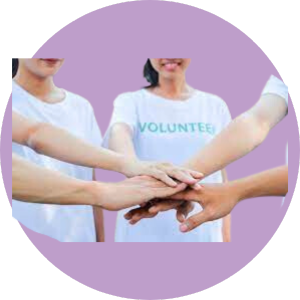When your friend confides in you that they are being abused, you feel helpless or overwhelmed. You may face difficulties finding the best way to help them. Researching organizations that can assist with signs of abuse and suggestions for your friend is an excellent place to start. Creating a safety plan with a friend experiencing DV can help them feel supported and is empowering
Although you may think the best thing for your friend to do is to leave, this might not always be possible at the time. You should also accept that your friend may not be ready to take that step. Resist the impulse to press your friend to leave. Although you are worried for their safety, assure your friend that you will support their decision and be there for them if they change their mind.
Safety Planning During Abuse
There is still something you can do to help your friend during active abuse – safety planning. Your friend might decide to stay with their abuser (for now), and it is important to help keep them as safe as possible. To minimize the risk of the abuser discovering communication with their victim, ensure that you do not engage your friend in the conversation around the abuser.
Key things you should discuss include ways to reduce the risk of injury, handling medical emergencies, documenting injuries, and creating code words your friend can use if they need urgent help without alerting the abuser. Other considerations for children and pets should be addressed as well.
For victims experiencing physical abuse (or if you see signs the abuse may escalate), discuss with your friend the importance of reducing the risk of injury during arguments. By attempting to avoid the kitchen or bathroom as these two rooms are the most dangerous. You can also offer to store any documentation of injuries such as photos, journals, or emails.
Include the children in the safety plan
Help them empower their children to act during emergencies. Creating code words they can use when their parent is in danger or has been severely injured. Create escape plans and make sure they know whom to trust if they need to ask for help. If your friend has a pet and cannot find someone to take care of the animal, consider taking the pet in for a while so they are in a safe place. This might help your friend feel better about leaving in the future. Many victims stay with their abuser because they have no shelter for their pet.
Emotional abuse may not seem as dangerous, but it should be taken seriously. To help your friend, try to interact with them as much as possible to reduce loneliness that comes with isolation. Be a friend they can trust when they need someone to talk to. Remind them that you care about them and that they have value. You can also encourage them, only in cases where it is safe for them to do so, to take classes or have hobbies outside the house.
Safety Planning for Leaving and Afterward
Regardless of whether or not there is physical abuse involved when your friend is ready to leave, you must be mindful of their safety. Risk of serious injury or fatality is at the highest when a victim leaves their abuser. Thorough planning is essential, you should engage a DV advocate if your friend agrees. Advocates can advise on resources and choices your friend will need to make.
You can still be an active part of your friend’s safety planning at this time. Help them gather essential documents to help establish their identity, relationship to the abuser, proof of financial accounts, insurance, and medical information for your friend and all children. Make sure your friend packs an emergency bag that includes clothes, toiletries, medication, and money.
Safety plans for leaving (and after leaving) typically address orders of protection, changing travel routes, notifying schools, work, and authorities of the situation (if your friend chooses to have their abuser arrested). If your friend secures an order of protection, help them decide who should have copies and assist them with this (extra for the car, work, schools, church, or parents).
Stalking is not uncommon in cases of domestic violence and can start even before your friend leaves their abuser. Encourage them to document any suspicious activity they notice – no matter how insignificant it may seem. Old phones should be replaced, vehicles checked for tracking devices, all PINs and passwords to accounts should be changed. You can also help by accompanying your friend places and altering their schedule.
Links for Safety Plan Templates
If you want to help your friend safety plan but are not sure where to start, visit the below links for sample documents you can use. For additional examples or more information you can search “domestic violence safety plan.”
High School and College Safety Plans – Documents created by Love Is Respect for high school and college students.
Domestic Violence Personalized Safety Plan – National Center on Domestic and Sexual Violence template for during and after abuse.
Individualized Workplace Domestic Violence Safety Plan – Make It Our Business (an organization addressing spillover of DV in the workplace) template to safety plan for the victim or survivor at their place of employment.
Safety Planning for Pets Affected by DV – Animal Welfare Institute list of suggestions for pet safety in cases of domestic violence.
Donate to BTSADV today and help a friend heal from domestic abuse








